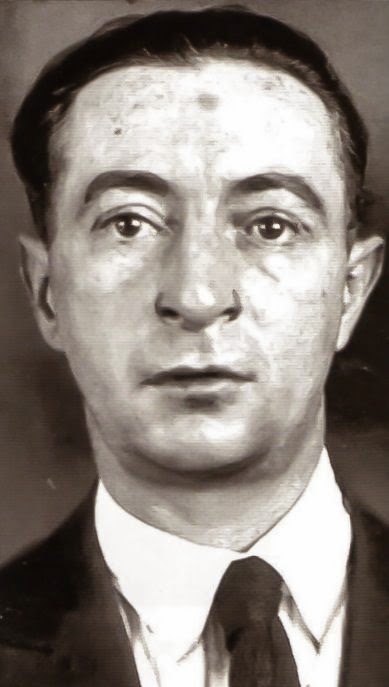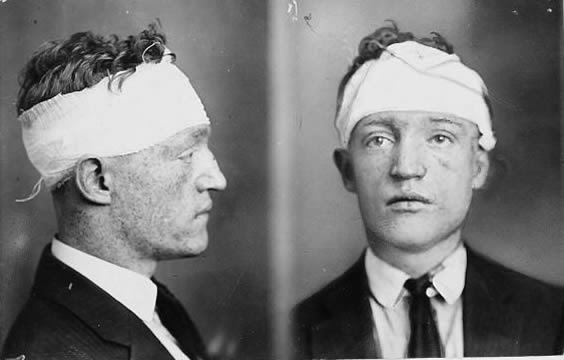 |
| White Hand Gang |
Around 1900, the various powerful Irish gangs on the Brooklyn waterfront combined into the White Hand Gang, so named because they said they were battling the "Black Hand dagoes." Indeed, from about 1900 to 1925, a grim war was waged along the New York waterfront between Irish and Italian gangsters for control of the lush rackets there. Slowly the Italian mafiosi gained, but at a tremendous loss of blood and manpower.
After World War I, the White Handers retained a firm grip on the Brooklyn Bridge–Red Hook sections and collected tribute from barge and wharf owners. Those who declined to pay saw their wharves and vessels looted, burned or wrecked. All longshoremen had to pay a daily commission for the right to work. Some paid willingly because they were Irish and saw their salvation in the vows of the White Handers to keep the docks clear of Italians.
Following the pattern of the Irish-American gangsters of the 19th century, the White Handers were a violent lot and could be counted on to kill one of their own if there was a quick profit in so doing.
  |
It was never determined who murdered White Hand leader Dinny Meehan shortly after the war, but the power thereafter passed, after some obligatory bloodletting, to Wild Bill Lovett, a pinched-faced little man who looked too weak to harm a fly. He could, however, shoot a lot of people. Wild Bill was considered the greatest worthy ever to head the White Handers, and he actually had the Mafia Camorra elements on the run as he extended White Hand influence.
Lovett was assassinated in 1923 by a mafioso murder expert nicknamed Dui Cuteddi (Two Knives), using no such namesake weapons, but rather a cleaver. Dui Cuteddi was shipped back to Sicily with a handsome pension for his fine services, and the Mafia elements came on strong under a triumvirate of Vince Mangano, Albert Anastasia and Joey Adonis.
Adonis was heavily involved in bootlegging at the time, partners with the likes of Lucky Luciano and Frank Costello, but Prohibition, it was realized, was a short-term situation, while the waterfront rackets were forever.
 |
| Wild Bill Lovett |
The White Hand power passed to Richard "Pegleg" Lonergan, a zany killer who had lost a leg in an argument with a train during a railway looting expedition. He was a pock-faced killer, with, according to the police, at least 20 murders to his credit. He would maim any Mafia terrorists trying to move in on his docks. Then he would turn around and demand double tribute from the hapless victim who had the effrontery ever to pay off Italians.
However, if the Mafia had been cunning enough to murder a crafty opponent like Wild Bill Lovett, a mad hatter like Lonergan could not survive for long. On the day of Christmas 1925, Lonergan led a contingent of his men into the Adonis Social Club, a South Brooklyn speakeasy owned by the Mafia.
Although the Irish hoodlums were greatly outnumbered, Lonergan was contemptuous of the foe, including a rather fat-faced one with a long scar on his face. Seeing two Irish girls dancing with Italian gangsters, Lonergan kicked them out of the place, ordering them to "get back with the white men."
Suddenly all the lights went out and guns blazed in the darkness. When vision was restored, Lonergan and his top aides, Needles Ferry and Aaron Harms, lay dead in a pool of blood. The rest of the White Handers had fled.
 |
| Richard "Pegleg" Lonergan |
Eventually the police investigation identified the man with the scar as none other than Al Capone, then back from Chicago for a sentimental visit to his old home ground. The police could not substantiate reports that Capone had personally plugged Lonergan and had to drop any prosecution of him.
Capone himself insisted he had had nothing to do with the killings, declaring, "I never met an Irishman I didn't like." On his return to Chicago, Capone continued his extermination campaign against the Irish O'Banion Gang.
The New York mafiosi were grateful for Capone's caper in Brooklyn, and it was said that if Capone hadn't triggered the violence, Lonergan and his cohorts might have walked out safely. As it was, the White Handers had been stripped of their last important leader. The gang disintegrated within three years and the New York waterfront became secure Mafia country.